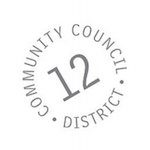At its meeting October 24, the Zoning Committee of the Saint Paul Planning Commission
ended with a tied 3–3 vote on a motion to overturn the conditional approval of the site
plan for 2495 Kasota Avenue, which Rohn Industries would like to turn into a parking lot
for 25 semi trailers. The St. Anthony Park Community Council wants the approval
overturned because the ground contains contaminated materials of the old Elm Street Ash
Dump.
The 3–3 tie vote means the site plan will go to the full Planning Commission without a
recommendation from the Zoning Committee.
After a two-hour-plus meeting with reports from city staff, testimony from St. Anthony
Park Community Council staff and volunteers and neighbors, and Rohn staff and
contractors, the committee’s discussion hinged on two main points:
- Is the land at 2495 Kasota considered to be an environmentally sensitive area? Should
it be considered a wetland? - Has enough sampling of the toxic material that underlays this site been done to assure
public and worker safety during and after construction?
Karlyn Eckman, SAPCC Environment Committee member and past Mississippi
Watershed Management Organization commissioner, said in her testimony, “You cannot
separate this site from its larger environmental and watershed characteristics. In my
professional opinion the proposed development would irreparably harm the remaining
pond habitat through runoff, noise, light pollution, worsening water quality and traffic.”
Michael Russelle, SAPCC Environment Committee co-chair and retired USDA soil
scientist, was particularly effective in answering questions from the committee. Thorough
sampling is needed before construction is allowed, Russelle cautioned, because areas
contaminated with lead and other toxic metals cannot be identified by sight or smell
during earth moving. He pointed out that the one lead “hot spot” that Rohn’s contractors
found and plan to remove would not have been found at all if the sampling had been just
8 feet in a different direction. He suggested that a better method would be to create a
dense grid over the whole site, take composite samples within each section, and if
anything is found in one then take individual samples in that area to locate the hot spot.
The next action will be a vote on whether to approve the site plan at the Planning
Commission meeting on Nov. 1, 8:30 a.m. in Room 40 of City Hall. This is a public
meeting but not a public hearing.
Learn more about the project, find links to sign the petition and donate here.

